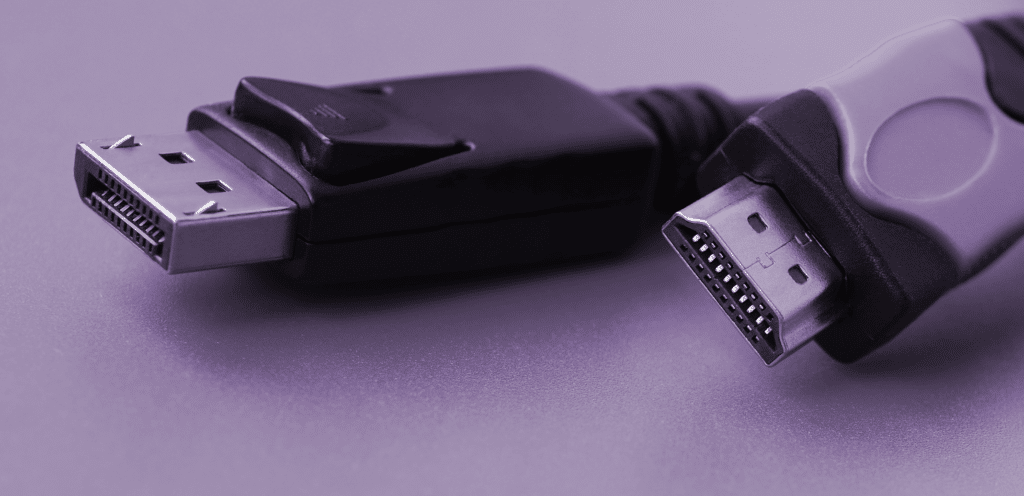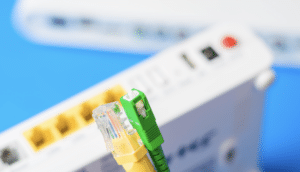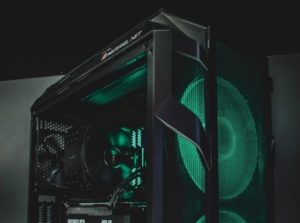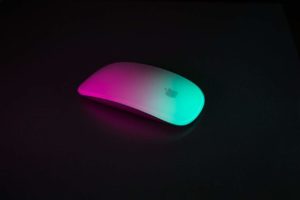Both modern PCs and laptops are usually equipped with a HDMI port and an additional DisplayPort connector. Both connections are used for quick Data transmission image and sound – but which of the two options should you ultimately choose? Our guide article will tell you.
DisplayPort or HDMI: which connection is better?
Modern laptops are becoming more and more compact and therefore no longer offer too much space for accommodating various connection options. The VGA connector (Video Graphics Array) was the first victim of the industry and can only be found on older devices - which is not particularly bad, since it is now considered far too slow and therefore outdated. In newer computers and laptops, it has long since been replaced by the HDMI connection (High Definition Multimedia Interface), which can be used to transmit both image and sound using an HDMI cable. However, image and sound can also be transmitted via a DisplayPort connection, which is available as an alternative connection option for many devices - which is why inexperienced users in particular are asking themselves which of the two connections they should use.
To answer that question, let's take a look at the benefits of HDMI and DisplayPort: Both connections transmit significantly higher amounts of data than the VGA connection, which has now been replaced, which means that, conversely, they can also transmit razor-sharp 4K images at up to 60 FPS (frames per second). This was not possible using a VGA connection, so the two successors are definitely the more up-to-date connections.
The transfer rate
However, if you take a closer look at both connection options, you will find that there are definitely one or the other difference to discover. A commercially available HDMI 2.0 is able to achieve transmission rates of up to 144 Hz, which is absolutely normal in gaming if you like playing current games. However, this transmission rate is not always actually used, because many manufacturers give their HDMI cables technical restrictions that throttle the number of frequencies. If you opt for an alternative DisplayPort cable in combination with the eponymous connection, you can be sure that the transfer rate of 144 Hz will be achieved in any case. And that's not all: DisplayPort cables can also achieve values of 240 Hz and more, so this should be preferred, especially if the PC game to be played has high requirements.
Whether you really need the higher transfer rate of a DisplayPort connection depends primarily on how you use your own computer or laptop: If you just surf the Internet, watch video clips on YouTube, edit pictures or write texts, you certainly don't need a lightning-fast transfer rate . However, if you use your PC to play high-resolution video games, you should definitely opt for the DisplayPort connection, since a higher frequency can definitely make an important difference here - after all, in numerous games (especially tactical games such as first-person shooters) it all counts millisecond that could make the difference between victory and defeat.
Important differences between an HDMI and a DisplayPort cable can also be found in the speed at which both cables work: The current version 2.1 of the HDMI cable achieves a transfer rate of 38,4 Gbit/s, the current DisplayPort version 1.4 manages an almost identically good 32,4 GBit/s at the top. However, the situation is somewhat different with the older versions of the two standards: With HDMI 2.0, the limit is already 18 GBit/s, with HDMI 1.4 even around 10 GBit/s. The older DisplayPort version 1.3, on the other hand, achieves 25,9 GBit/s. At least the older version had HDMI at a disadvantage so far, but now both standards are almost equal.
The color depth
Last but not least, there is another criterion to consider when it comes to HDMI or DisplayPort: the color depth. While a DisplayPort cable can "only" display 30 bits per pixel, an HDMI cable achieves a much better 48 bits per pixel. However, gamers should not really be put off by this, because both cables support the display of 8K resolution at the same time. With both variants you are optimally equipped for the future, since 8K resolution as a fixed standard is currently still a long way off and even 4K is still on the rise. However, the subject of color depth is much more important for experienced graphic designers, photographers and artists who often edit images and graphics with the PC and depend on the flawless display of the finest color nuances.
The different mini variants of DisplayPort and HDMI
Also important to know: Both DisplayPort and HDMI are available in different variations. In addition to the classic version, DisplayPort is also available as a Mini-DisplayPort and therefore fits perfectly with 1st and 2nd generation Thunderbolt sockets. The HDMI connection, on the other hand, is available in mini and micro versions, which are primarily used on compact notebooks where the manufacturer simply wants to save space with the smaller port.
Conclusion
Although HDMI and DisplayPort are very similar in many respects, both connections have their advantages and disadvantages. Before you decide on one of the two connections, you should simply ask yourself which tasks you want to use your computer or laptop for. If you like to play high-resolution games with the highest demands, you should ideally use DisplayPort, in all other areas a classic HDMI connection is usually more than sufficient.








